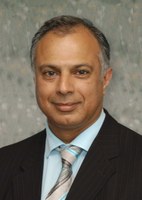14 Oct Rethinking Efficient Screening For Diabetes
MedicalResearch.com Interview with:
Professor Kamlesh Khunti
Professor of Primary Care Diabetes and Vascular Medicine
Co-Director of the Leicester Diabetes Centre
University of Leicester
Medical Research: What is the background for this study? What are the main findings?
Prof. Khunti: Screening for diabetes and those at risk of diabetes is a major priority globally. There are a number of tests available for conducting screening. These include non-invasive questionnaires to identify those who would need a blood test or going straight to a blood test. This study shows that a two step approach where one would do a non-invasive test followed by a blood test in those identified at high risk from the questionnaire leads to similar response rates and reduces the number of blood tests required.
47 studies (422754 participants); 29 one-step, 11 two-step and seven three/four-step were identified. Pooled response rate (95% Credible Interval) for invitation to OGTT was 65.5% (53.7, 75.6), 63.1% (44.0, 76.8), and 85.4% (76.4, 93.3) in one, two and three/four-step studies respectively. Type 2 Diabetes Mellitus (T2DM) yield was 6.6% (5.3, 7.8), 13.1% (4.3, 30.9) and 27.9% (8.6, 66.3) for one, two and three/four-step strategies respectively. The number needed to invite to the (Oral Glucose Tolerance Test) OGTT to detect one case of T2DM was 15, 7.6 and 3.6 in one, two, and three/four-step strategies. In two step strategies, there was no difference between the response or yield rates whether the first step was blood test or risk-score.
There was evidence of substantial heterogeneity in rates across study populations but this was not explained by the method of invitation, study location (rural versus urban) and developmental index of the country in which the study was performed.
Medical Research: What should clinicians and patients take away from your report?
Prof. Khunti: Irrespective of the invitation method, developmental status of the countries and or rural/urban location, using a multi-step strategy increases the initial response rate to the invitation to screening for diabetes and reduces the number needed to have the final diagnostic test (OGTT in this study) for a definite diagnosis.
If one is planning a screening strategy for your population than use cheap non-invasive self assessed or computer.
Medical Research: What recommendations do you have for future research as a result of this study?
Prof. Khunti: Future research should include methos of risk communication and also the use of technology.
Citation:
Kamlesh Khunti, Hamidreza Mani, Felix Achana, Nicola Cooper, Laura J. Gray, Melanie J. Davies. Systematic Review and Meta-Analysis of Response Rates and Diagnostic Yield of Screening for Type 2 Diabetes and Those at High Risk of Diabetes. PLOS ONE, 2015; 10 (9): e0135702 DOI: 10.1371/journal.pone.0135702
[wysija_form id=”5″]
Professor Kamlesh Khunti (2015). Rethinking Efficient Screening For Diabetes
Last Updated on October 14, 2015 by Marie Benz MD FAAD

